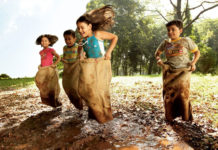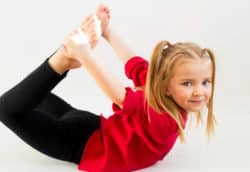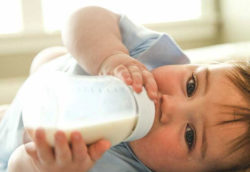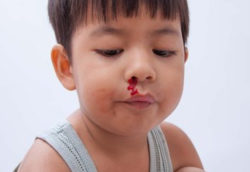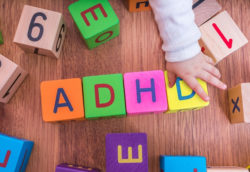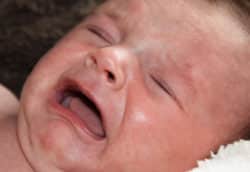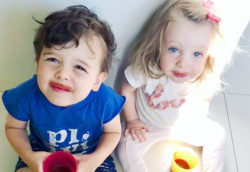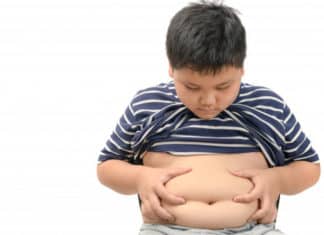The initial first year of your baby life is full of new beginnings, between crawling, pulling up to stand, and finally walking. It is full of ups and down in the process of their growth and development. seeing your child take up their first steps can be both exciting and nerve-racking at the same time. The first steps may look different for each and every child. While watching your children to explore the world on their feet, you may observe that their toes point (R) are inward or outward.
Most children feet point straight ahead or slightly outward. Some children feet, however, point inward. In-toeing affects the infants and children are generally noted by an inward rotated foot or feet. Out-toeing is just the opposite with an outward twist to the leg for the children.
In this article, we will focus on brief information about what is in-toeing and out-toeing in children and what causes in-toeing and out-toeing in children. you will also learn more about the treatment of in-toeing or out-toeing below of this article.
What Is In-Toeing In Children?

Most of the children feet point straight ahead or slightly outwards. But in some cases, the kid’s feet will point inward direction. An inward rotated feet where the toes point toward the midline when the kid’s walk is called in-toeing. It is also commonly called “pigeon’s toe”, and can appear during any phase of the development of the baby. That s why the initial state is more crucial and important. This is commonly seen in infants and young children. In-toeing (R) may be caused through hereditary genes or the baby’s positioning in the womb. If a parent demonstrated in-toeing as an infant or child, it is likely they will pass down the gene to their children. An infant may also develop in-toeing due to small feet movement and positioning in the womb. In-toeing is typically not painful for children and does not lead to arthritis.
What Cause Of In-Toeing in Children?
The in-toeing can be caused (R) due to three reasons: before going into details you should know:
- These causes can run in families.
- These causes can happen on their own or that can associate with other bone and muscle problems.
- Prevention is not possible as these happen due to either genetic or developmental causes.
The Three Causes Are:
1. Curved Foot (Metatarsus Adductus):

This is the most common cause of in-toeing by birth in children. It is also called as Metatarsus Adductus. It occurs when the feet bend towards each other from the midfoot out to the toe It may be either caused by positioning in the uterus or it runs in family by some member.
In this case, the foot is bent inward from the middle part to the toes it looks like a kidney bean. If the foot is bendable and the curve is not severe, then no treatment is required further. However, if the foot is rigid or stiff and if your child is under 8 months, your provider may recommend casting to allow the foot to grow straight.
2. Twisted Shin (Tibial Torsion):

Tibial Torsion is known as twisted shin which appears as a twist of the child”s lower leg. Tibial torsion (R) happens before birth when the baby’s legs rotate to fit in the restricted space in the womb. In generally after birth, the newborn baby’s legs rotate to align properly. However, if the shin has not untwisted by the time the child starts walking, then his or her feet may point in. This is first observed when the child starts walking. This is perceived most often two years after the baby starts to walk. As the tibia grows, most of the time, the legs will untangle. In most cases, the leg will appear normal by school age as the tibia untwists as the child grows. However, if a child aged about 8-10 still has a severe twist to the tibia, then surgery may be recommended.
3. Femoral Anteversion:

Femoral anteversion is similar to tibia torsion, except that, instead of the tibia, here, the femur (thigh bone) is twisted. A twisted thighbone (R) or femoral anteversion occurs when the femur, or thighbone, turns inward. As of this, the child walks, his or her kneecaps point inward leading to the pigeon’s toe in this case the knee and the feet point inside. It is often most obvious in children between 3-7 years of age. For some reasons, this condition happens more often in girls has proved by the studies. It may get worse by sitting in a “W” position. If a child age 10 and above have an abnormal gait or frequently trips, surgery may be indicated.
4. Femoral Retroversion:
 The thighbone (femur) is an angled backward relative to the hip joint, that resulting in outward feet positioning in kids. Femoral retroversion is less common than femoral anteversion in kids but this is also an important cause of in-toeing and out-toeing (R).
The thighbone (femur) is an angled backward relative to the hip joint, that resulting in outward feet positioning in kids. Femoral retroversion is less common than femoral anteversion in kids but this is also an important cause of in-toeing and out-toeing (R).
What Is Out-Toeing In Children?

Out -Toeing is also caused as duck feet which can be described as an opposite condition of pigeon’s toes. Besides, it is more evident than in-toeing because of the oddity of the child’s walk. Out-toeing is relatively less common than in-toeing and can occur in older children as well.
The Out-toeing usually found in both legs. The in-toeing, out-toeing bring about pain and long-term disability in children. This is the main reason that the out-toeing put massive pressure on the hip joints, legs, and as well as feet, which in results increases incredibly as the baby grows and put on more weight. This enhances the significance of, prompt treatment for this issue. Or else, the child has increased risk of developing childhood arthritis Out-toeing (R)
The message is one of the most common anatomic musculoskeletal variations encountered by pediatric primary care providers and a frequent reason for referral to a pediatric orthopedic surgeon. However, many children with out-toeing have variations of normal lower-extremity development which improve spontaneously and can be monitored by the primary care provider.
What Cause Out-Toeing In Children?
There are common causes and less common causes of out-toeing in children.
1. Hip Contracture:

During the time of pregnancy, the baby’s hip can be flexed up and rotated outward to fit in the mother’s womb. As of the wrongly positioned in the uterus, babies can be born with externally rotated hips and that can result in hip Contracture. Furthermore, as the baby does not move its hip during the entire gestation period, the baby’s hip can remain in this tight position after birth too. The Prolonged hip tightness can make the feet turn outward when the baby walks or start walking However, out-toeing due to hip contracture usually resolve on its own without any treatment further.
2. External Tibial Torsion:

Here, the shin bone (tibia) is twisted outward. External tibial torsion usually happens due to the positioning of the baby in the womb. External tibial torsion usually does not improve and tends to get worse as the child grows. Surgical intervention is required for correction since this condition does not resolve on its own.
3. Flat Feet:

Flat feet refers to feet with no curve or arch. Flat feet are generally associated with pronation, a leaning inward of the ankle bones toward the center line. Flexible flat feet are not rare among babies and toddlers. Out-toeing due to flat feet more often than not improves on its own without any treatment. Less common causes of out-toeing.Many children with flat feet do not experience pain or other problems. When pain in the foot, ankle, or lower leg does occur, especially in children, the feet should be evaluated.
4. Cerebral Palsy(CP):

Children with Cerebral Palsy, more often experience muscle imbalance in the legs. This can give rise to out-toeing. However, it usually appears on one leg (R) instead of both.
How To Treat In Toeing and Out Toeing in Children?
- There are not too many treatment options available for in and out-toeing in children. However, in most cases, it is seen that the twisted or bent bone usually resolves on its own as the child grows with a course of times.
- In the case of any functional issues the child is unable to walk, play, or run effectively, certain traditional treatments such as physiotherapy and custom (R) orthotics (specially designed shoes), braces, etc. are used to give some extra support to the foot and correct it eventually.
- In extremely rare instances or case, if in-toeing or out-toeing is severe, creating pain, impairing the normal walking, or if not resolved by a certain age (usually it should be resolved by the age of 3 ), then surgical correction is often recommended in order to avoid future complications.
- Whether it is an in-toeing or out-toeing, if the baby has issues with walking, weight management is an important factor. Obesity will worsen the situation.
What Problems Do These Children Face in Future
certain children have much difficulty in learning to walk properly in the initial stage of life, but get better later on. Most kids do end up playing sports (R) and participating in other activities just like any other child. The condition usually gets better with the course of time.
When to see a Doctor:
If the above techniques for checking a child’s gait or walking problems do not work for your child, then it may result in something more serious treatment. You should get in touch with your doctor if your child shows any of the following signs and symptom further.
- Worsening of the abnormalities after treatment.
- Delays in different developmental milestones.
- Presence of a foot that seems to be more outward than the other.
- Complains from the child about pain in the leg and limping around.
- The existence of in-toeing or out-toeing even after your child is 3-year-old.
In-toeing and out-toeing in children is quite an important aspect to be kept in every mom, the above information will definitely help you a lot in having the awareness regarding the in-toeing and out-toeing in toddlers.




